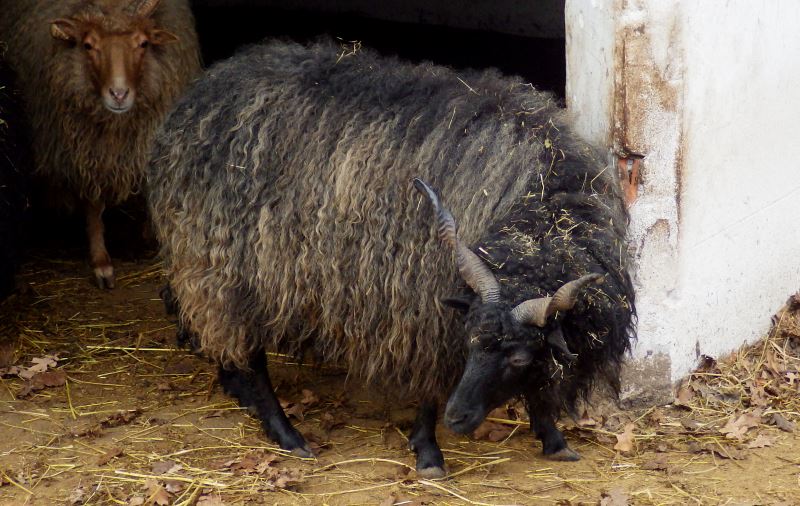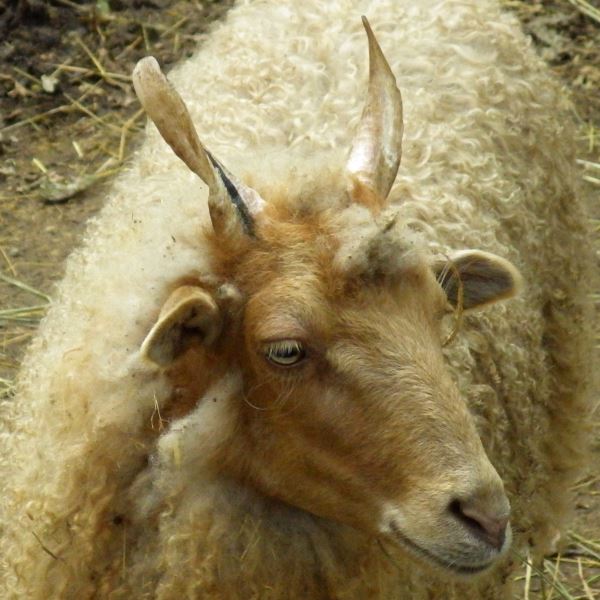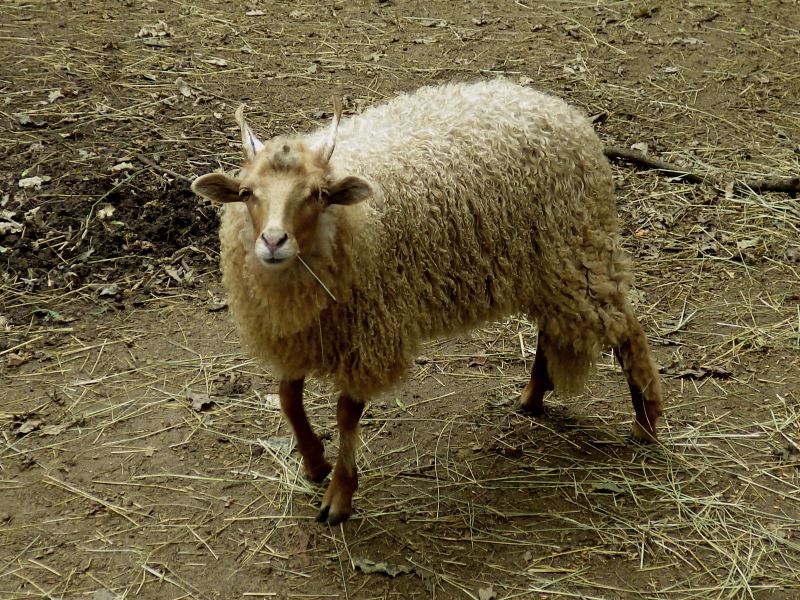Racka sheep are one of the iconic farm animals of Hungary.

Racka sheep (Ovis aries strepsiceros hungaricus), Szeged Zoo.
According to the common belief the racka breed of sheep was introduced to Europe by the Hungarians when they settled in there and remained primarily a Hungarian breed ever since.
Racka sheep (pronounced ruts-kah) have interesting spiral-shaped horns (apparently both sexes wear them). Racka sheep are used for wool, milk and meat production. Racka wool is very long and coarse, mostly of interest to people who like to hand spin their own yarn. Racka skin was traditionally used as the material to make the coat of shepherds in Hungary. Racka sheep don’t produce a lot of meat but the meat is high quality both in terms of nutrition and taste. Before the invention of plastics racka horns were also used as raw material for various everyday household items.
While in the middle ages there were millions of racka sheep kept in Hungary the breed went nearly extinct right after the Second World War, mainly because it was replaced by other breeds.
The Hungarian government exercised significant efforts to save this iconic breed and today their number is growing.
Racka sheep are hardy and can survive under harsh conditions. As a result they are sometimes crossed with other breeds to pass their hardiness to the offspring.




